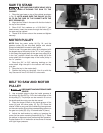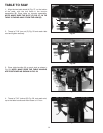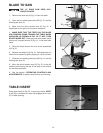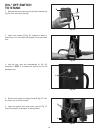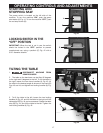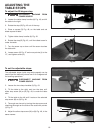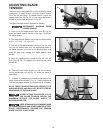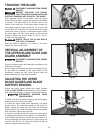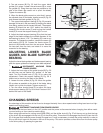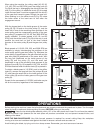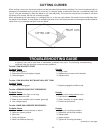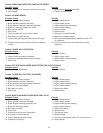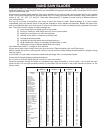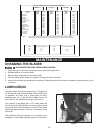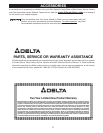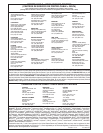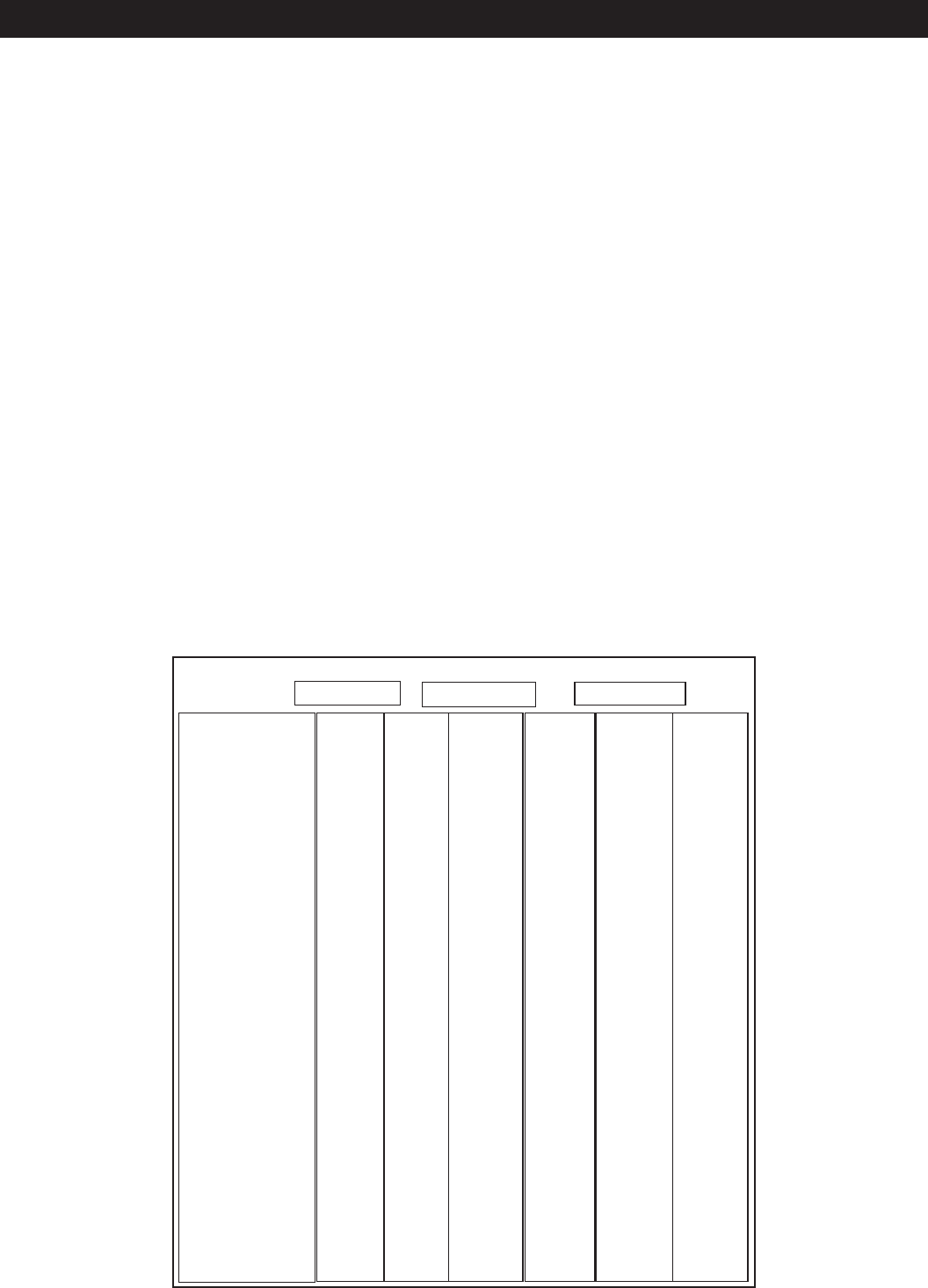
25
BAND SAW BLADES
A band saw blade is a delicate piece of steel that is subjected to tremendous strain. You can obtain long use from a
band saw blade if you use it properly. Be sure you use blades of the proper thickness, width, and temper for the various
types of material and cuts.
Always use the widest blade possible. Use narrow blades only for sawing small, abrupt curves and for fine, delicate
work. This will save blades and will produce better cuts. For cutting wood and similar materials, Delta offers blades in
widths of 1/8", 1/4", 3/8", 1/2" and 3/4". Delta also offers several 1/2" blades for metal cutting of different teeth per
inch configurations.
Any one of a number of conditions may cause a band saw blade to break. Blade breakage is, in some cases,
unavoidable, being the natural result of the peculiar stresses to which blades are subjected. Blades will break often
due to avoidable causes, such as the lack of care to the blade or the blade not being properly adjusted to the band
saw. The most common causes of blade breakage are:
(1) faulty alignments and adjustments of the guides.
(2) forcing or twisting a wide blade around a curve of short radius.
(3) feeding the work piece too fast into the blade.
(4) dullness of the teeth, or absence of sufficient set.
(5) improperly tensioned blade.
(6) top guide set too high above the work piece being cut.
(7) using a blade with a lumpy or improperly finished braze or weld.
(8) continuous running of the saw blade when not cutting.
Use blades that are 93½" in length on this machine.
Always use a sharp blade. Keep it free from gum and pitch. Clean frequently with a stiff fiber brush.
Narrow blades are used for cutting small circles or curves while the wider blades are best suited for straight cutting
such as ripping.
A new blade, in most cases, will perform better and last longer than a re-sharpened blade.
Ensure that the blade guides are adjusted properly.
Do not force or twist the blade around a curve or a very short radius.
Feed the workpiece through the blade at a consistent rate, allow the blade to do the cutting – do not feed the work
piece too fast. Do not apply excessive tension to the blade. Set the tension to the proper tension as shown on the
tension scale.
SUGGESTED METAL CUTTING BLADES AND SPEEDS
MATERIAL
STEELS
Angle Iron
Armor Plate
Carbon Steel
Chromium Steel
Cold Rolled Steel
Drill Rod
Graphite Steel
Hidfh speed Steel
Machinery Steel
Molybenium Steel
Nickel Steel
Silicon Manganese
Stainless Steel
Structural Steel
Tungsten Steel
FOUNDRY METALS
Brass-hard and soft
Bronze – Aluminum
Bronze – Manganese
Bronze _ Naval
Bronze – Phosphorus
Cast Iron – Gray
Cast Iron – Malleable
Cast Steel
Copper – Beryllium
Gunnite
Meehanite
Monet
Nickel – Cold Rolled
Nickel Silver
Silver
NON-METALS
Bakelite
Cork
Fibre
Hose –Canvas, Rubber
Hose – Mettalic
Mica
Plastics
Porcelain
Slate
Transite
TEETH
PER
INCH
24
18
24
24-18
24-18
14
18
24
18
18
18
18
24
24
18
18
18
18
18
18
18
18
18
18
24
18
18
14
18
24
10
10
14
10
24
24
14
24
24
24
FPM
160
40
85
85
220
85
60
85
160
85
40
85
40
160
40
335
335
160
160
335
115
160
160
160
335
160
115
60
220
220
335
3000
3000
3000
220
335
3000
160
335
335
TEETH
PER
INCH
14
14
14
14
14
14
14
14
14
14
14
14
14
14
14
14
14
14
14
14
14
14
14
14
18
14
14
10
14
18
10
10
10
18
14
18
18
18
FPM
160
40
60
60
220
60
40
60
160
60
40
85
40
160
40
335
335
115
115
335
85
115
115
85
220
115
85
40
220
220
220
3000
3000
220
3000
115
220
220
TEETH
PER
INCH
10
14
14
14
14
14
14
14
14
14
10
14
10
10
14
14
14
14
10
14
14
10
14
10
10
10
14
14
10
10
10
14
10
14
14
FPM
40
40
40
160
40
40
160
40
40
60
40
115
40
335
335
85
85
220
60
85
85
40
160
85
60
40
220
220
160
3000
3000
220
3000
160
85
UNDER ¼”
1/ TO ¾”
1“ANDUP
¼”



